Infections are treated differently based on their type. Bacterial infections often require antibiotics. These medicines stop bacteria from growing or kill them.
Viral infections need antiviral medications. They keep viruses from making more copies or boost the immune system. For fungal infections, doctors use antifungal drugs in creams or pills.
Natural methods like herbs, vitamins, and minerals can also help. But always talk to a doctor first. They ensure correct diagnosis and treatment. This is key for battling infections, especially serious or long-lasting ones.
Preventing infections is vital too. Measures like vaccination, proper hand hygiene, and safe food handling help. Knowing about different treatments and avoiding infections can help everyone stay healthy.
Key Takeaways
- Bacterial infections are typically treated with antibiotics.
- Viral infections may be treated with antiviral medications.
- Fungal infections are often addressed with antifungal drugs.
- Natural remedies can sometimes aid the body’s fight against infections.
- Seeking medical care is important for proper diagnosis and treatment.
Understanding Infections
Many people worldwide get infections. These are from harmful microorganisms called pathogens. Pathogens can be viruses, bacteria, fungi, parasites, or even prions. They enter our bodies from the outside, causing many diseases.
What are Infectious Diseases?
Infections come from external sources, unlike non-infectious diseases. The flu, COVID-19, and strep throat are some examples. But diseases such as cancer are not contagious. Instead, they come from our genetics, environmental factors, or as we grow older.
Knowing if a disease is infectious or not, is key for stopping, diagnosing, and treating it. With infections, it’s important to deal with the pathogens. Non-infectious diseases focus more on managing symptoms and health reasons behind them.
“Infectious diseases remain one of the leading causes of death worldwide, underscoring the importance of continued research and effective prevention strategies.”
Pathogens come in many forms and affect our health differently. For instance, viruses like the flu or SARS-CoV-2 use our cells to spread. Bacteria can lead to infections in our breathing systems. Fungi might cause deep-seated infections. Parasites, like the ones causing malaria, can also harm us. And prions can cause severe brain diseases.
Knowing about how infections work and the types that exist can help us face them better. This understanding is crucial for fighting infections. It helps us protect both ourselves and our communities.
Types of Infections
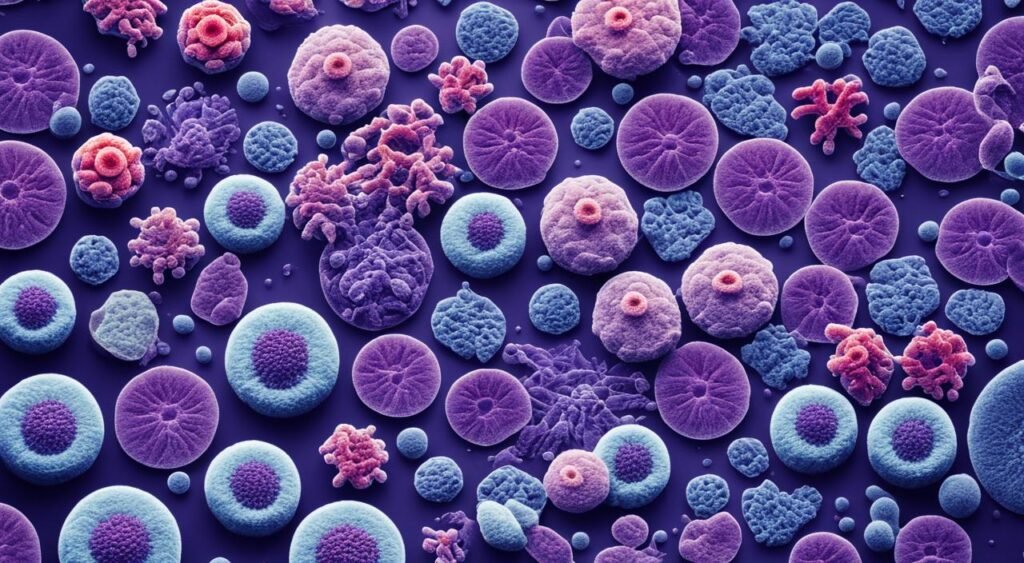
Infectious diseases have many causes – viruses, bacteria, fungi, and parasites. It’s key to know what each type does for the right diagnosis and treatment.
Viral Infections
Viruses get into your cells and make more of themselves. This causes illnesses like the flu, COVID-19, and colds. They make you feel bad with fever, cough, and tiredness.
Bacterial Infections
Harmful bacteria release toxins or mess up body functions. This leads to sicknesses like strep throat and pneumonia. Bacteria can grow fast, causing many different symptoms.
Fungal Infections
An overgrowth of fungi causes infections, for example, athlete’s foot and yeast infections. These can make your skin, nails, or mucous membranes itchy, red, or sore.
Parasitic Infections
Parasites live off the human body, causing illnesses like malaria and toxoplasmosis. They can disrupt how your body works, leading to various symptoms.
TSEs or prion diseases are rare but serious. They affect the brain, caused by abnormal prion proteins. This can have severe neurological effects.
Knowing about different infections helps doctors give better care. They can make the right diagnosis and choose treatments that work best against the infection.
Causes and Risk Factors
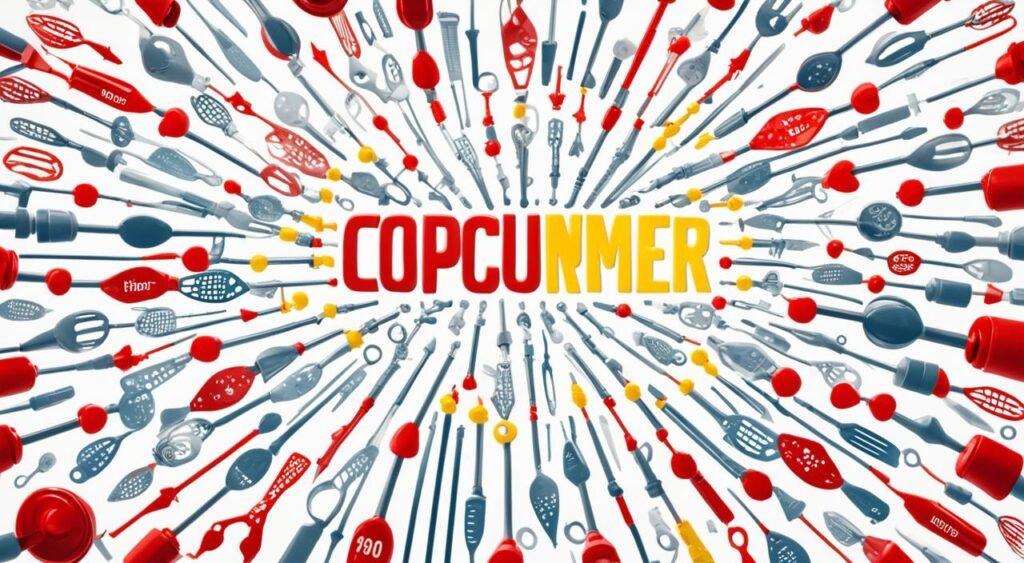
Infectious diseases have many causes. They can come from things like contaminated areas or health issues that make the body weak. It’s important to know these causes to prevent getting sick and to get help early if needed.
Getting exposed to germs is a big reason why people get sick. Germs like viruses or parasites can pass from sick people, bad food, or dirty water. Some jobs, like working in healthcare or farming, can put you at more risk of getting these germs.
If a person’s immune system is not strong, they are more likely to get sick. This can happen because of certain health problems or medicines they take. Also, age plays a role. Kids and older people might get sick more easily because their immune systems are not as strong.
- Health problems like chronic illnesses, cancer, or HIV/AIDS can make you more likely to catch an infection.
- Visiting places with a lot of diseases or places that are new to you can also put you at more risk.
- Not being clean or careful with food and water can help germs spread.
Knowing the causes and risks of infectious diseases is key. It helps in making plans to avoid getting sick. And if you do get sick, it guides you in getting the right help.
“Preventing the spread of infectious diseases requires a multifaceted approach that addresses both individual and community-level factors.”
Diagnosis of Infections
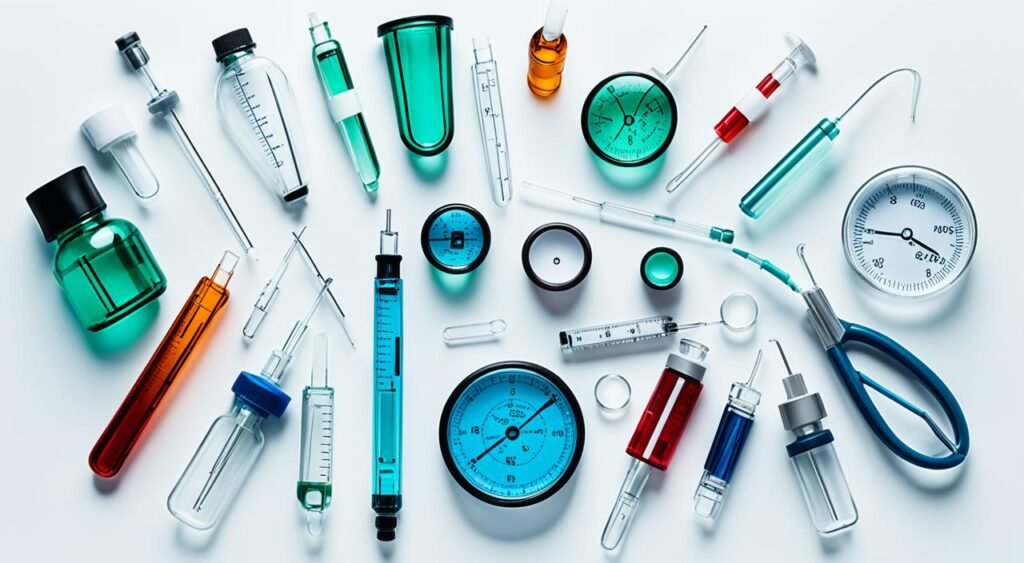
Finding out if you have an infection is key to getting the right treatment. Doctors use your medical history, a physical check-up, and tests to figure out what’s causing the infection. This helps them treat it properly.
Laboratory Tests for Diagnosing Infections
There are several common tests for infections. These include:
- Blood tests look for signs like germs or antibodies to show if you have an infection.
- Urine tests can spot if an infection is in your bladder, kidneys, or somewhere else in your urinary system.
- Swabs from the throat, nose, or skin check for any harmful germs.
- A stool sample helps find stomach and intestine infections caused by bacteria, viruses, or parasites.
- A spinal tap, or lumbar puncture, checks for infections in the brain or spinal cord by testing fluid around these areas.
These tests give doctors important clues about your infection. They help in finding out what’s wrong and how serious it is. This leads to choosing the best treatment.
Imaging Scans and Biopsies
Doctors can also use images to spot infections. This includes:
- X-rays check for infections in your lungs, bones, and other areas.
- CT scans provide detailed images to find the exact spot and extent of an infection.
- MRIs show if the brain, spine, or other soft tissues have an infection.
Sometimes, a biopsy, or taking a small tissue sample, is needed. It helps confirm the infection.
If your symptoms keep getting worse or don’t go away, see a doctor right away. Getting early help is key for the accurate diagnosis and good treatment of infections.
| Diagnostic Test | Purpose |
|---|---|
| Blood tests | Detect pathogens, antibodies, or other markers of infection |
| Urine tests | Identify urinary tract infections |
| Swabs | Collect samples from the throat, nose, skin, or other areas for analysis |
| Stool sample | Diagnose gastrointestinal infections |
| Spinal tap | Test for central nervous system infections |
| Imaging scans (X-rays, CT, MRI) | Locate the source and extent of an infection within the body |
| Biopsy | Confirm the diagnosis of an infection by testing a small tissue sample |
“Knowing what type of infection is present is crucial for determining the appropriate treatment plan.”
Treatment Options
When treating an infection, the type of pathogen is key. Bacterial infections often need antibiotics that kill or slow bacteria growth. Viral infections, on the other hand, might be treated with antiviral medications. These drugs can stop the virus from multiplying or help your immune system fight it. Fungal infections are fought with antifungal drugs, which can be applied on the skin or taken by mouth.
Sometimes, people use natural remedies like herbs and vitamins to boost their immune system. This can help the body fight infections better. But, always talk to a doctor before trying any home remedies. They can tell you if it’s safe, especially if you’re already on other medications.
To stop infections from getting stronger and harder to treat, finish your whole prescription. This is especially true for antimicrobial drugs like antibiotics that fight bacteria. If an infection is really tough, or if it keeps coming back, you might get the chance to try new treatments through clinical trials.
“The key to effective infection treatment is to identify the underlying cause and use the appropriate antimicrobial therapy, while also supporting the body’s natural healing processes.”
Prescription Medications
Doctors often use antibiotics, antivirals, and antifungals to treat infections. These drugs target specific types of pathogens. It’s really important to take them exactly as your healthcare provider tells you. This helps make sure the infection goes away and doesn’t come back.
Natural Remedies and Self-Care
- Strengthen your immune system with vitamins, minerals, and herbal supplements
- Support your body’s natural defenses by cleaning yourself and your space
- Drink plenty of fluids and rest well as your body recovers
Clinical Trials
Clinical trials are a chance for new treatments for very strong or hard-to-treat infections. If standard drugs don’t work for you, these studies might offer something new. They test the safety and strength of new medicines or treatment methods and can be a way to find hope after other options have been tried.
Infection Prevention
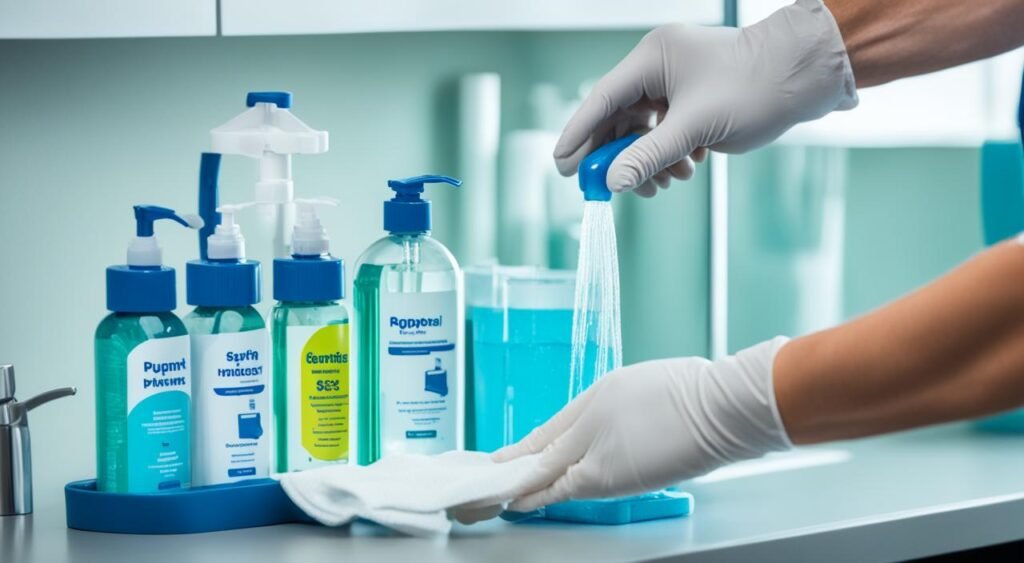
Preventing infections is vital for a healthy life. You can do this by getting vaccinated and keeping clean.
Vaccines and the Immune System
Vaccines are key in stopping infections. They make your body’s defenses better at fighting off germs. By getting shots, you lower your chances of getting sick from diseases like the flu, measles, and COVID-19.
Getting vaccinated helps everybody stay healthy. If many people in a community get their shots, it makes it hard for diseases to spread. This also helps those who can’t get shots, like babies and some sick people.
Healthy Habits for Infection Prevention
Using good hygiene keeps germs away. Washing your hands often with soap or using hand sanitizer is great for killing germs.
When handling food, be careful. Cook it well, keep raw food away from cooked food, and handle and store food safely. This helps avoid getting sick from food.
Eat well, stay active, and get enough sleep. This keeps your body’s defenses strong. Try not to take too many antibiotics, since this can make some germs stronger and harder to kill.
| Infection Prevention Strategies | Benefits |
|---|---|
| Vaccination | Boosts your immune system to fight specific germs, reducing infection risk |
| Regular handwashing | Kills germs and stops infections from spreading |
| Proper food handling and preparation | Lessens the chance of getting sick from food |
| Healthy lifestyle (balanced diet, exercise, and sleep) | Makes your immune system better at fighting off infections |
| Avoiding overuse of antibiotics | Prevents strong germs that can resist drugs |
If you make these infection prevention habits part of your daily routine, you lower your chance of getting and passing on diseases. This leads to a healthier life for everyone.
Government Policies and Public Health
Keeping the public safe from infections needs a strong plan from governments and health officials. In the U.S., groups like the CDC, FDA, USDA, and Defense Department team up. They watch, find, and handle outbreaks of diseases together.
These teams study info on dangerous infections from healthcare workers and states. This lets them find and stop outbreaks early. Rules and plans they make help get ready for pandemics, make vaccines, and control how we use medicines.
The CDC watches for diseases and jumps into action when needed. It works closely with local health groups. The FDA makes sure vaccines and medicines are safe. The USDA checks our food and watches for diseases that can pass from animals to people.
Even the Defense Department is part of the health effort. They look into new diseases and help prep for pandemics. Together, these groups work to stop diseases before they spread, find them fast, and know how to react, keeping Americans safe.
Through teamwork, these teams strengthen how we watch for diseases, respond to them, and support public health. Working together is key to protecting the country from disease threats, old and new.
Also Read: Top 10 Orthopedic Hospitals For Bone Care
Complications of Infections
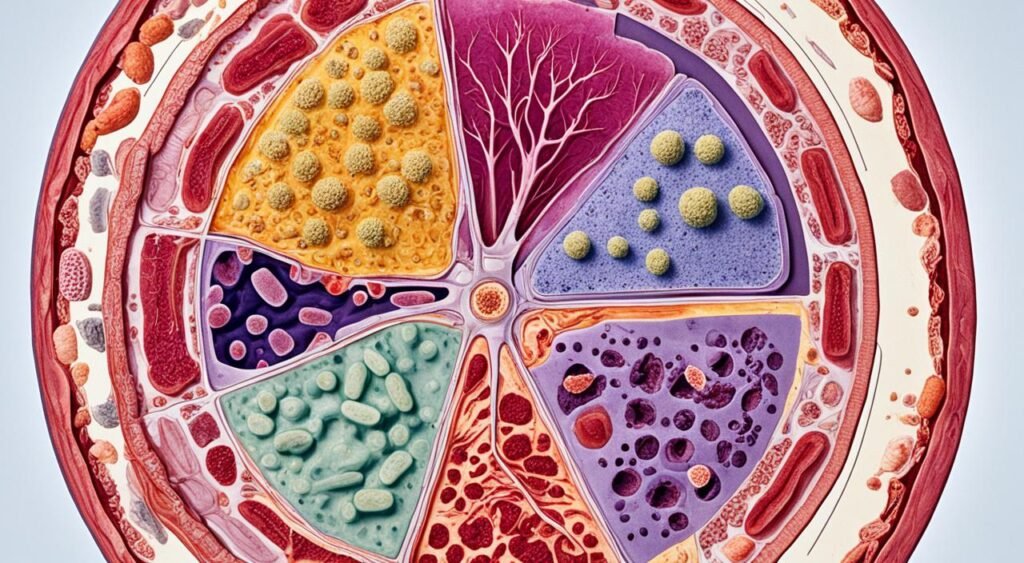
Many infectious diseases are manageable, but some cause serious complications. It’s important to know about these risks. This knowledge helps in seeking medical help quickly and preventing them effectively.
Dehydration is a common complication. It happens because of high fever, vomiting, or diarrhea. This can be especially dangerous for kids and older people. It may lead to problems with the body’s salts (electrolytes) and how organs work.
Pneumonia can develop from different kinds of infections. It brings on lung inflammation and fills them with liquid. This makes it hard to breathe. Without treatment, it may lead to failing to breathe well.
Sepsis is when the body fights an infection in a way that harms it. It can turn into septic shock, a life-threatening problem. This can cause very low blood pressure and stop organs working well.
Meningitis is a swelling of the brain and spinal cord’s protective layers. Bacteria and viruses can cause it. It can cause seizures, hurt the brain, or be deadly.
For people with HIV/AIDS, infections can lead to AIDS. This makes fighting off infections and diseases harder.
Hepatitis B and C can raise the risk of liver cancer. HPV infections may lead to cervical cancer.
People with weak immune systems are at high risk of bad infection outcomes. Good health habits and quick medical care for signs of infection can prevent many dangerous problems.
“Early recognition and prompt treatment of infections are crucial in preventing the development of serious complications.”
Conclusion
The fight against infections is about more than just treating them. It’s about stopping them before they start. This includes knowing the different diseases, their causes, and how to best prevent them. Vaccines and healthy living go a long way in keeping us safe from infections.
If you think you have an infection, quick action is key. Modern tests have made diagnosing diseases way better. This helps doctors choose the right treatments, like the best medicines or natural cures, for you.
There’s always new research happening to create better ways to fight infections. This work is very important because diseases can change and become resistant to treatments. Everyone can help by seeking help from doctors when they need it. This step is critical in keeping everyone healthy.
FAQs
How are infections treated?
Infections are treated based on what causes them. For example, antibiotics help fight bacterial infections. Antiviral drugs work against viruses, and antifungal drugs combat fungi. Adding herbs, vitamins, and minerals might also boost your immune system against infections. Remember, vaccines and keeping clean are key to staying healthy, too.
What are infectious diseases?
Infectious diseases come from harmful organisms that get into your body. These can be viruses, bacteria, fungi, or parasites. Unlike non-infectious diseases, they’re not from inside factors like genetics. Something like a cold is infectious because a virus causes it.
What are the different types of infections?
Viruses, bacteria, fungi, and parasites cause infections. Viruses make you sick with the flu or COVID-19. Bacteria can be behind illnesses like strep throat. Fungi cause issues like athlete’s foot. Parasites lead to diseases like malaria. Each type needs its own approach to fighting it off.
What causes infections and who is at higher risk?
Infections can spread through sick people, dirty food or water, bug bites, or a bad environment. Those with weak immune systems are more at risk, including old and young people. Jobs that expose you, traveling to certain places, and not being clean can also up your risk.
How are infections diagnosed?
Doctors diagnose infections by looking at your health history and doing physical exams. They might also run tests on your blood, urine, or other samples. Imaging scans can show where an infection is and how serious it is. This helps your doctor figure out the best way to treat it.
What are the treatment options for infections?
Each infection needs the right treatment. Antibiotics are for bacterial infections, antivirals for viruses, and antifungals for fungus issues. Herbs and vitamins can sometimes support your body in fighting off infections. Your doctor will pick the best plan for you.
How can infections be prevented?
Preventing infections is a big part of staying healthy. Vaccines are great at protecting you. They help your body learn to fight off different bugs. Plus, washing your hands and preparing food safely lower your risk. These steps are a big help against getting sick.
What is the government’s role in managing infectious diseases?
Keeping people safe from diseases needs a team effort between the government and health groups. In the U.S., several agencies like the CDC and the FDA watch out for outbreaks. They share info to stop sicknesses from spreading.
What are the potential complications of infections?
Most infections go away on their own. But some can cause bad problems. These include severe infections like sepsis and diseases that can hurt you long-term, like liver cancer from some hepatitis infections. Staying healthy helps your body fight off these risks.
Source Links
- https://my.clevelandclinic.org/health/diseases/17724-infectious-diseases
- https://www.ncbi.nlm.nih.gov/books/NBK209704/
- https://www.mayoclinic.org/diseases-conditions/infectious-diseases/diagnosis-treatment/drc-20351179





